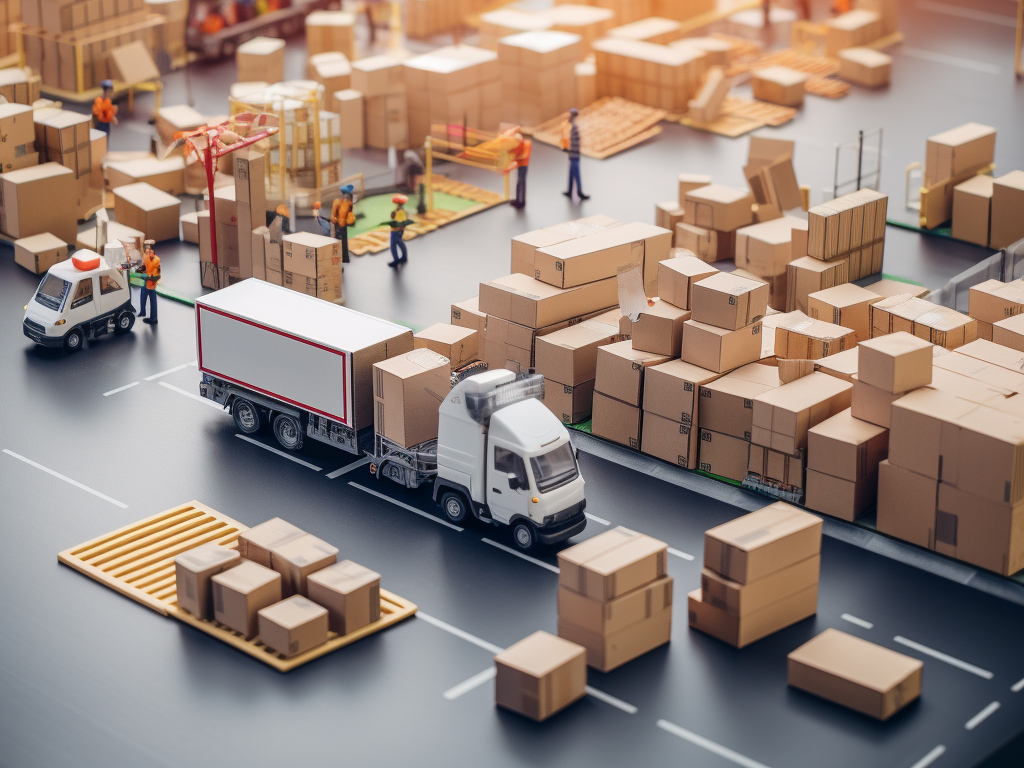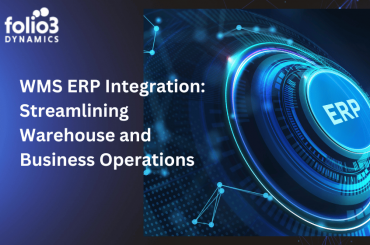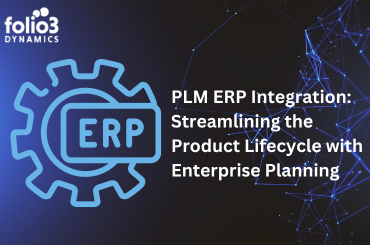Table of Contents
In the ever-evolving landscape of modern business, supply chains are the lifeline that ensures products and services reach consumers efficiently. However, like any complex system, supply chains are prone to bottlenecks, which can significantly impact a company’s operations. In this blog, we’ll explore the intricacies of supply chain bottlenecks, the various challenges they present, and the innovative solutions available to streamline your supply chain. We’ll also shed light on how Folio3’s expertise can help you tackle these bottlenecks and improve supply chain efficiency.
Types of Supply Chain Bottlenecks
Supply chain bottlenecks can take various forms, each with its unique challenges and implications. Understanding these bottlenecks is crucial for effective management. Here’s a closer look at the primary types:
Production Bottlenecks
Production bottlenecks are like traffic jams within your manufacturing processes. They can occur for several reasons, such as:
- Equipment Downtime: When a critical machine breaks down, it disrupts the entire production line.
- Labor Shortages: A shortage of skilled workers can slow down operations and production rates.
- Resource Constraints: Limited access to raw materials, components, or energy sources can hinder production.
Addressing production bottlenecks requires strategies like predictive maintenance, multi-skilled workforce training, and efficient resource management.
Inventory Management Bottlenecks
Inventory management bottlenecks can be likened to trying to maintain a balanced scale:
- Excess Inventory: Having too much stock ties up working capital, storage costs, and can lead to product obsolescence.
- Stockouts: Running out of inventory can result in missed sales, dissatisfied customers, and costly expedited orders.
To tackle inventory bottlenecks, adopt strategies like just-in-time inventory, demand forecasting, and effective supplier collaboration.
Transportation Bottlenecks
Transportation bottlenecks can disrupt the smooth flow of products through the supply chain due to various factors:
- Traffic Congestion: Delays due to traffic jams can cause shipment delays.
- Inefficient Routing: Poorly optimized routes can lead to longer transit times.
- External Disruptions: Natural disasters, political events, or border issues can interrupt the transportation network.
Overcoming transportation bottlenecks involves employing route optimization software, real-time tracking, and contingency planning.
Information Bottlenecks
Information bottlenecks are akin to a communication breakdown that affects decision-making and coordination:
- Data Silos: When different departments or partners hoard information without sharing, it can hinder decision-making.
- Communication Gaps: Inadequate or delayed communication can lead to misinformed decisions.
- Manual Data Entry: Reliance on manual data entry increases the risk of errors and delays.
To address information bottlenecks, consider implementing integrated supply chain management systems, real-time dashboards, and automation.
Supply Chain Bottlenecks – The Ripple Effect
When supply chain bottlenecks occur, they rarely stay confined to a single stage of the process. Instead, they have a domino effect, affecting multiple aspects of your business. Let’s explore how these ripples manifest:
Delayed Production
When a bottleneck occurs in production, the immediate impact is, of course, a slowdown in manufacturing. But this delay doesn’t stop there:
- Increased Lead Times: The delay in production means longer lead times for products, potentially leading to customer dissatisfaction.
- Overburdened Workforce: Production delays may require employees to work extra hours, leading to fatigue and decreased morale.
- Higher Costs: Extended production cycles often result in increased operational costs due to overtime and expedited shipping.
Inventory Nightmares
When inventory management bottlenecks disrupt the balance between supply and demand, the ripple effect can be felt throughout the supply chain:
- Excess Storage Costs: Excess inventory ties up capital in storage and can lead to increased warehousing costs.
- Stockouts and Lost Sales: Running out of stock may result in missed sales opportunities and potential long-term customer losses.
- Supplier Discontent: If you consistently demand expedited shipments, suppliers may become less willing to work with your business.
Shipping Dilemmas
Transportation bottlenecks can cause significant issues as products struggle to move through the supply chain smoothly:
- Customer Dissatisfaction: Shipping delays can lead to customer complaints and, in some cases, lost business.
- Higher Transportation Costs: Rushing deliveries or using alternate routes to avoid bottlenecks can lead to increased shipping expenses.
- Inventory Imbalance: Prolonged transit times can disrupt inventory balance and planning.
Information Flow Disruptions
When information bottlenecks impact your supply chain, the effects are not just limited to communication:
- Decision-Making Delays: A lack of real-time data or miscommunications can slow down decision-making processes.
- Risk of Errors: Manual data entry and the use of outdated information can lead to mistakes in orders and inventory.
- Missed Opportunities: Delayed responses to market changes may result in missed business opportunities.
Identifying and Analyzing Supply Chain Bottlenecks
Effectively managing supply chain bottlenecks begins with the ability to identify and analyze them. This process involves a combination of data-driven insights, real-time monitoring, and predictive analysis. Here’s a closer look at the steps involved:
Data-Driven Analysis
Leveraging historical data is the foundation of identifying and analyzing bottlenecks:
- Historical Performance Metrics: Examining past supply chain performance, such as lead times, order fulfillment rates, and inventory turnover, can reveal trends and potential bottlenecks.
- Key Performance Indicators (KPIs): Establishing relevant KPIs allows you to measure the effectiveness of different stages in your supply chain. When certain KPIs fall below expected levels, it can be an indicator of a bottleneck.
- Root Cause Analysis: Using data, it’s possible to conduct root cause analysis to determine the underlying issues contributing to bottlenecks. It might be equipment failures, delayed supplier shipments, or other factors.
Predictive Analytics
Predictive analytics is a powerful tool for identifying bottlenecks before they become problematic:
- Machine Learning Algorithms: By using machine learning models, you can forecast potential bottlenecks based on historical data patterns.
- Scenario Planning: Running different scenarios through predictive models can help you plan for various contingencies, ensuring that your supply chain remains resilient.
Real-Time Monitoring
In today’s interconnected world, real-time monitoring is essential for identifying bottlenecks as they occur:
- IoT Sensors: Internet of Things (IoT) sensors can provide real-time data on equipment performance, inventory levels, and transportation conditions.
- Alert Systems: Implementing automated alert systems can notify supply chain managers of issues as they happen, allowing for swift intervention.
Strategies for Overcoming Bottlenecks
Once you’ve identified and analyzed supply chain bottlenecks, the next crucial step is to develop and implement strategies to overcome them. These strategies should be tailored to the specific type of bottleneck you’re dealing with, and they may involve a combination of techniques and technologies. Here’s an in-depth exploration of these strategies:
Lean Manufacturing
Lean manufacturing is a systematic approach aimed at minimizing waste and improving efficiency within your production processes:
- Continuous Improvement: Implement a culture of continuous improvement where every employee is encouraged to identify and eliminate inefficiencies.
- Just-in-Time (JIT) Production: JIT aims to produce only what’s needed when it’s needed, reducing excess inventory and associated costs.
- Kanban Systems: Use visual cues like Kanban cards to signal when more materials or components are required.
Just-in-Time Inventory Management
Addressing inventory management bottlenecks requires a focus on balancing supply and demand efficiently:
- Demand Forecasting: Utilize historical data, market trends, and advanced analytics to forecast demand accurately.
- Supplier Collaboration: Work closely with suppliers to ensure timely deliveries and reduce lead times.
- Safety Stock: Maintain a safety stock level to mitigate unexpected fluctuations in demand.
Efficient Transportation Planning
To overcome transportation bottlenecks, it’s essential to optimize shipping and distribution processes:
- Route Optimization Software: Use advanced software to plan and optimize delivery routes, reducing transit times and fuel costs.
- Real-Time Tracking: Implement real-time tracking and visibility solutions to monitor shipments and respond to unexpected delays promptly.
- Diversification of Transportation Modes: Utilize a combination of transportation modes, such as air, rail, and road, to mitigate potential disruptions.
Information Flow Improvement
Improving the flow of information is crucial for tackling information bottlenecks:
- Integrated Supply Chain Management Systems: Implement end-to-end supply chain management systems that provide real-time data access and collaboration tools.
- Automated Data Entry: Minimize manual data entry and potential errors by automating data capture and transfer.
- Data Analytics: Leverage data analytics tools to gain insights into your supply chain performance, identify trends, and address bottlenecks in real-time.
Collaborative Supply Chain Solutions
In the complex world of supply chain management, collaboration is often the key to unlocking efficiency and reducing bottlenecks. Collaborative supply chain solutions involve fostering partnerships with suppliers, distributors, and other key stakeholders to synchronize processes and create a more agile and responsive supply chain. Here’s a closer look at how collaboration can help overcome bottlenecks:
Partnering with Suppliers
Collaboration with suppliers is essential for streamlining the supply chain, as suppliers play a crucial role in the success of your operations:
- Supplier Integration: Building strong relationships with suppliers allows for better coordination, ensuring a smoother flow of materials and components.
- Joint Forecasting: Collaborative forecasting with suppliers helps align production schedules with demand, reducing inventory bottlenecks.
- Risk Management: Working together on risk assessments and mitigation strategies can minimize the impact of unforeseen disruptions, such as natural disasters or geopolitical events.
Distribution Network Optimization
Collaborating with distribution partners is equally important for maintaining an efficient supply chain:
- Shared Data and Visibility: Implement data-sharing platforms that provide real-time visibility into inventory levels, orders, and shipments.
- Demand Shaping: Collaboratively shape demand through strategies like joint marketing efforts or tailored promotions to smooth order patterns.
- Transportation Coordination: Work with distribution partners to optimize transportation routes and delivery schedules, reducing transportation bottlenecks.
The Role of Technology in Overcoming Supply Chain Bottlenecks
Technology plays a pivotal role in modern supply chain management. It empowers businesses to not only identify bottlenecks but also to respond to them swiftly, optimizing operations and minimizing disruptions. Here’s an extensive look at how technology aids in overcoming supply chain bottlenecks:
Artificial Intelligence (AI) in Supply Chain Management
AI has emerged as a game-changer in supply chain management. Its capabilities extend to prediction, optimization, and automation:
- Predictive Analytics: AI-driven predictive models can anticipate potential bottlenecks based on historical data, helping you take proactive measures.
- Inventory Optimization: AI algorithms can optimize inventory levels and improve demand forecasting, addressing inventory management bottlenecks.
- Route Optimization: AI helps create efficient transportation routes, reducing the risk of transportation bottlenecks.
- Demand Sensing: AI can detect real-time shifts in customer demand, allowing for agile adjustments in production and distribution.
IoT (Internet of Things) and Real-Time Data
The Internet of Things has revolutionized supply chain visibility by providing real-time data from connected devices:
- Sensor Data: IoT sensors monitor conditions like temperature, humidity, and location during transportation, preventing potential disruptions.
- Asset Tracking: IoT enables asset tracking, which is crucial for locating items within a warehouse and managing inventory.
- Environmental Monitoring: IoT sensors can help prevent product damage by monitoring environmental conditions in real-time.
Blockchain for Transparency
Blockchain technology has gained prominence for its ability to ensure transparency and traceability:
- Provenance Tracking: Blockchain records can track the origin and journey of products, reducing the risk of counterfeit goods and enhancing transparency.
- Smart Contracts: Smart contracts embedded in blockchain can automate contract enforcement and payments, reducing delays in the contract process.
- Secure Data Sharing: Blockchain enables secure data sharing among supply chain partners, improving collaboration.
Automation and Robotics
Automation and robotics enhance efficiency in various aspects of the supply chain:
- Warehouse Automation: Automated systems for order picking, packing, and shipping reduce human error and speed up fulfillment processes.
- Autonomous Vehicles: Self-driving vehicles are increasingly being used for transportation, improving efficiency and reducing the risk of accidents.
- Drones: Drones are employed for inventory counts and monitoring large outdoor storage areas.
Folio3’s AI-Driven Solutions
Folio3’s AI-driven solutions are designed to give your business a competitive edge by ensuring your supply chain operates seamlessly, saving you both time and resources. Our predictive capabilities, real-time monitoring, and data visualization tools can help you proactively identify and address bottlenecks, making your supply chain more resilient and adaptable in a dynamic business environment:
Predictive Analytics for Bottleneck Prevention
Folio3’s AI solutions leverage predictive analytics to prevent bottlenecks before they occur:
- Data Insights: By analyzing vast amounts of historical data, AI algorithms provide real-time insights into your supply chain.
- Early Warning System: The AI system acts as an early warning system, identifying potential bottlenecks and enabling proactive intervention.
- Scenario Planning: With AI, you can create various scenarios to determine the most effective strategies for bottleneck prevention.
Real-time Monitoring and Data Visualization
Folio3’s AI solutions incorporate real-time monitoring and data visualization to ensure your supply chain runs smoothly:
- Data Integration: Real-time data from various sources is integrated into a central dashboard, providing a holistic view of your supply chain.
- Alerts and Notifications: Automated alerts and notifications are triggered when the system detects irregularities or potential bottlenecks.
- Performance Analytics: AI-driven solutions offer comprehensive performance analytics, allowing you to assess the health of your supply chain at a glance.
Machine Learning for Inventory Optimization
Inventory management is a critical aspect of the supply chain, and Folio3’s AI-driven solutions excel in this area:
- Demand Forecasting: Machine learning algorithms analyze demand patterns to provide more accurate demand forecasts, reducing the risk of inventory bottlenecks.
- Stock Optimization: AI optimizes inventory levels, ensuring you have the right amount of stock at the right time, preventing excess or stockout situations.
- Supplier Collaboration: AI can facilitate better collaboration with suppliers, ensuring timely deliveries to maintain an efficient supply chain.
Conclusion
In the ever-evolving landscape of modern business, overcoming supply chain bottlenecks is not just a challenge; it’s an opportunity. By understanding the types of bottlenecks, recognizing their ripple effects, employing technology, and embracing collaborative solutions, your business can navigate the complexities of supply chain management with ease.
But it’s just the beginning. The future of supply chains sparkles with the promise of AI, IoT, and blockchain innovations, ushering in an era where bottlenecks are not hurdles but stepping stones to success.
Connect with Folio3 to explore AI-driven solutions and tailored strategies that can streamline your supply chain, boost efficiency, and ensure your business remains agile and competitive in the dynamic world of modern commerce. Your journey to a more efficient supply chain begins today.





